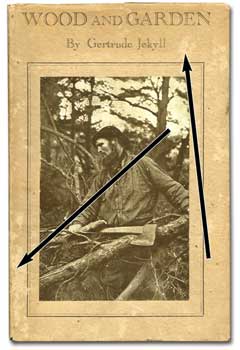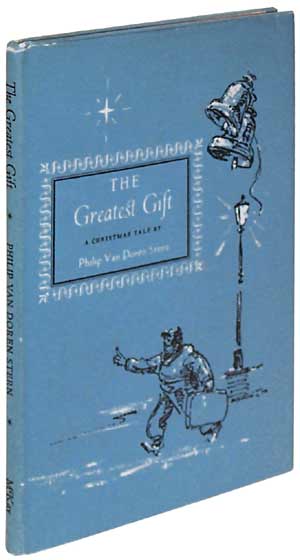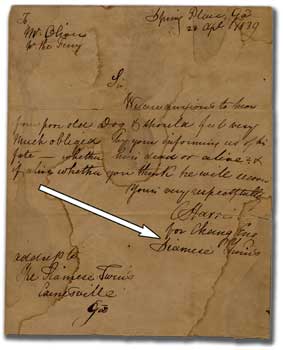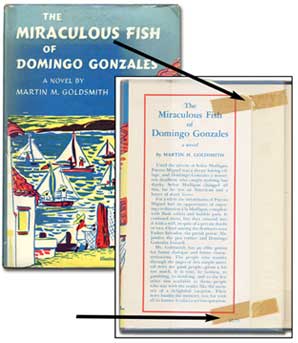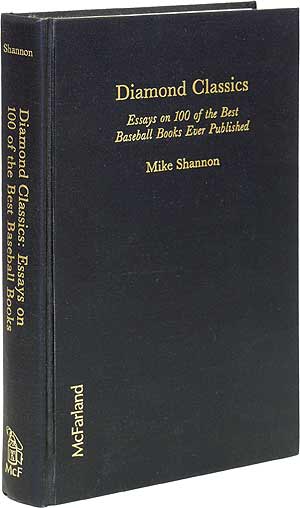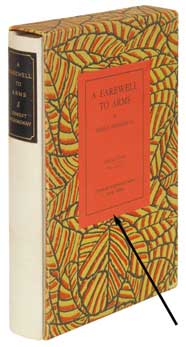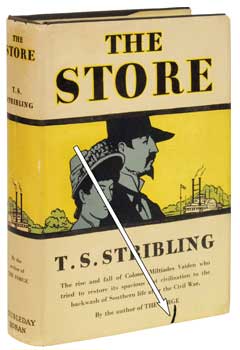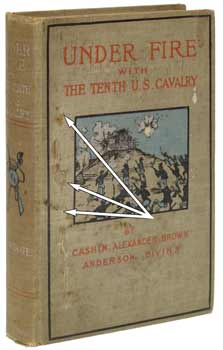
Glossary
What book dealers really mean. Click on thumbnails for larger images.
Sabin
Joseph Sabin's monumental bibliography Bibliotheca Americana: A Dictionary of Books Relating to America from Its Discovery to the Present Time.
Scuffed
Like rubbed, but more severe. This copy of Gertrude Jekyll's Wood and Garden, offered in our Catalog 126, has a few spots of scuffing to the dustjacket.
Secret book
Our term, though never formally used in catalog descriptions, for a book about which we know something that few others do. These secrets are usually only revealed by us in our catalogs or exclusively on our website. Care for an example? Well, that wouldn't make for a very good secret. Fortunately for you, secrets rarely stay secret for very long, particularly in the information age. So, it is no longer much of a secret that the classic holiday film It's a Wonderful Life was based on a little gift book entitled The Greatest Gift by Philip Van Doren Stern. What is still a secret is how to tell the first trade printing of this book (this copy with a contemporary inscription was offered in our Catalog 72) from the many reprints that look almost identical. Cagey, aren't we?
Secretarial inscription
Different from a forgery, this is a copied signature of an author, or other notable, made with his or her knowledge (usually by a secretary or similarly empowered agent), but which is not from his or her own hand. This letter offered in our List 54, from Chang and Eng, the "Siamese Twins" who popularized the term, was handwritten and signed by their secretary.
Shadow
see Tape Shadow
Shannon 100
A citation referring to Mike Shannon's Diamond Classics: Essays on 100 of the Best Baseball Books Ever Published.
Signed
Autographed by the author, artist, or other relevant person, but not personalized to an individual (if it were, it would be Inscribed). This copy of A Room of One's Own, offered in our Catalog 127, was signed by the author, Virginia Woolf. What's the difference between a signed book and a flatsigned one? We'll give you a hint: maybe it's not the book, it's the bookseller.
Slipcase
An open-ended box, usually made of cardboard, but sometimes covered with cloth, into which a book is slid in order to protect it. These are sometimes supplied by the publisher with the book, most often in the case of expensive limited editions such as the limited edition of Ernest Hemingway's A Farewell to Arms (this copy offered in our Catalog 105), for which each slipcase was numbered on an applied printed to label to match the book. Sometimes slipcases are ordered by collectors to be custom made for a specific book. If a book was published with a slipcase, and it is missing, it has a negative effect on the value of that copy.
Sliver
A very narrow or shallow chip or nick, usually at the edge of a dustjacket. This copy of T.S. Stribling's early Pulitzer Prize-winning novel The Store, offered in Catalog 117, has a thin sliver on the front panel of the rare dustjacket.
Soiling
An accumulation of dirt or dust most often caused by handling. This copy of Under Fire with the Tenth U.S. Cavalry by Herschel V. Cashin has moderate soiling to the boards.
Solander case
Drop-front, or drop-back case used to preserve books (or as originally conceived, to preserve botanical specimens). One drawback is that occasionally, when the "drop front" is removed, the book drops forward onto the floor, with resultant damage to the book, and dismay to the collector.
Sophisticated
What has been done to a book or a jacket that has been tarted up, in a variety of ways, usually by a dealer (but not infrequently by a collector looking to sell his collection), to look better than it would otherwise look. As one of our colleagues has wisely opined "Sophisticated collectors prefer that their books be unsophisticated."
Spine
The part of the book that faces you when it is properly shelved on a bookshelf (unless of course, you're lurking around in back of the bookcase, for what nefarious purposes we won't speculate, but we're willing to bet that they're probably pretty awful!).
Spine fold
As in: "separated at the rear spine fold." The crease or bend in the paper that is created when a jacket is bent around the edge of the spine — there are two of these, in case you wondered — a front spine fold and a rear spine fold. Spine folds create slight weakness in the paper that might eventually become the location of a tear or chip.
Spiral bound
Held together at the spine with a spiral binding, usually made of either metal or plastic, that is threaded though punched holes on the spine end of the textblock, as is the case with this copy of Artists of Today: Drawings of Joseph Delaney, which was offered in our catalog 120.
Splayed
Warped or slightly bowed out, used most often by us to describe boards that have bent away from the text block, see also Bowed.
Square
Description of a book that has retained its original shape, or in other words, not become misshapen from repeated reading or mistreatment. Even a single reading of a book can easily round the spine a bit, so the square, unread copies that were ignored by readers are prized by collectors.
Starting
As in "hinge starting." This means that when you receive the book from us in the mail, unwrap the expert packing, and open the front cover, the hinge separation, which was starting when we looked at it, will have finished.
Sticker shadow
A shadow caused by the interaction of the glue from an old price or other sticker, with the paper of a page or jacket. A flaw whose severity is in direct proportion to the darkness of the shadow. This copy of Fernando Periquet's Goyescas, offered in our Catalog 92, had a small sticker shadow at the top of the front wrap. In the book's favor was the fact that it was translated by the noted African-American writer James Weldon Johnson, and was his second book.
Sunning
Lightening to the ink or paper of a jacket or book caused by exposure to sunlight, or less often to artificial light sources.

